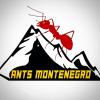Hey guys so it finally got a little warmer where i live (which is Montenegro Pg) so i grabbed a couple of containers and headed out and i wanted to see what i can find , a few days back i saw a messor worker so i figured maybe other creatures might be waking up too and so they have i stumbled upon a quite a large centipede today maybe around 25cm rly slim long and shiny with a red line stretching the whole length of its body so i caught it for educational purposes
(she was half way under brick btw)
I'm interested in the sp and some information about it like conditions to keep as a pet and anything else. Thnx a lot to anyone!
Edited by NikolaBale, February 8 2018 - 9:29 AM.




















